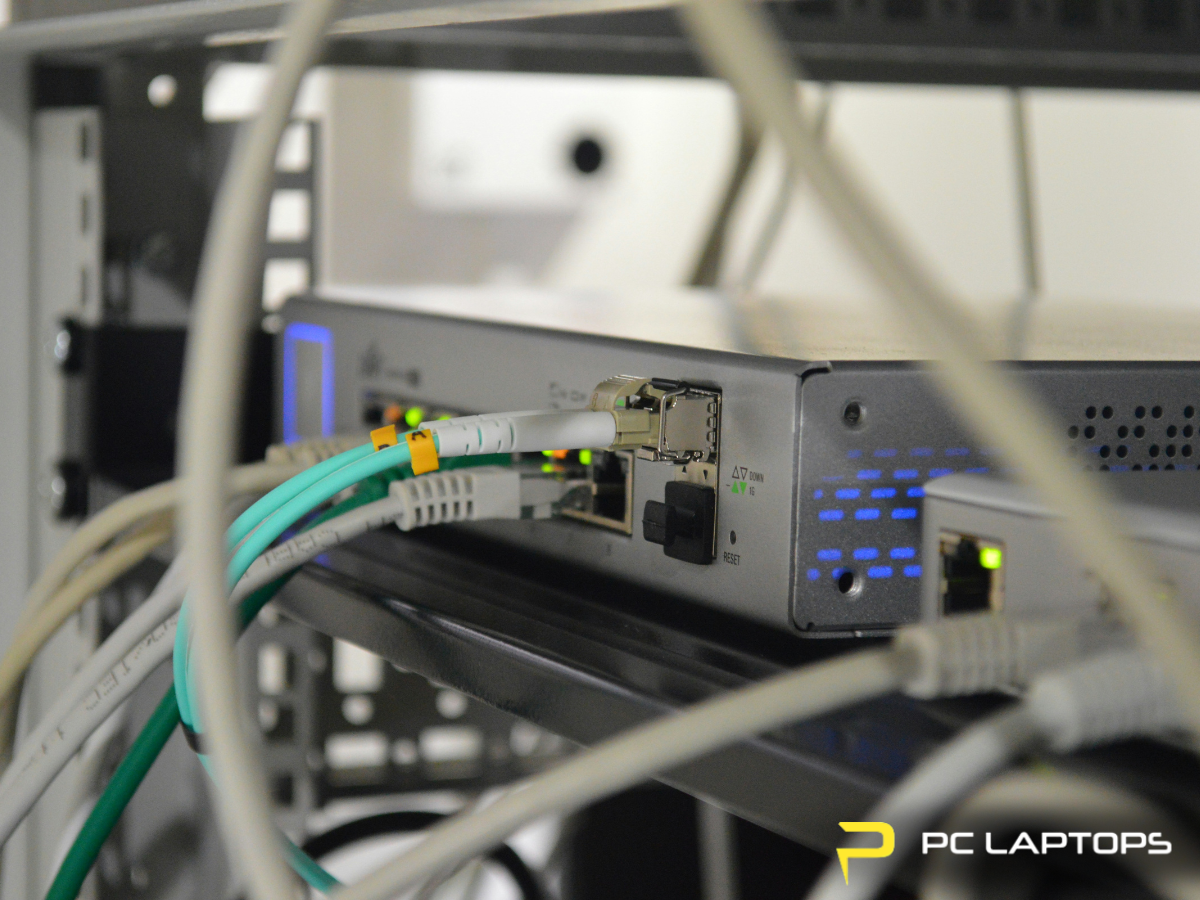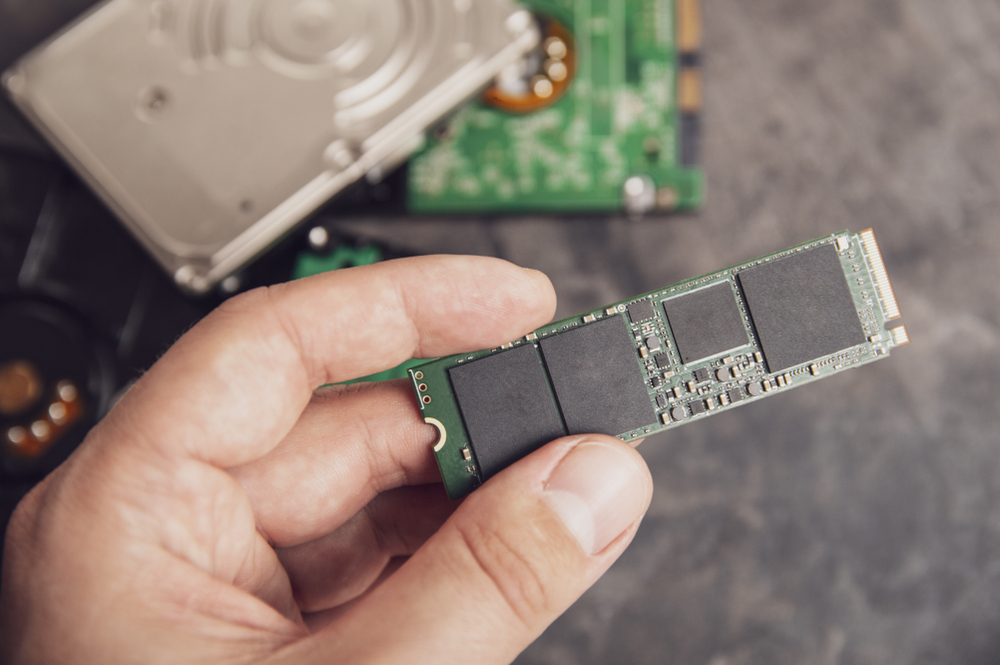Boosting Router Security for Computer Internet Access

Boosting Router Security for Computer Internet Access
Your home router is the gateway to every device in your household. If it’s not secured properly, it opens the door to hackers, malware, and data theft. This guide covers best practices to boost router security, protect your wireless network, and keep unwanted access out. If you suspect your computer's been compromised, visit PC Laptops today: Utah’s go-to tech repair shop for fast, secure solutions.
At A Glance: Secure Your Home Router in 5 Steps
Your router is the gateway to all your devices—if it’s not secure, everything’s at risk. Here’s how to protect it:
Change default passwords – Use strong, unique credentials.
Update firmware – Keep your router software up to date.
Use WPA2/WPA3 encryption – Avoid outdated security settings.
Turn off risky features – Disable UPnP, remote access, and WPS.
Set up a guest network – Keep visitors off your main network.
Suspect malware or slow performance? PC Laptops in Utah can help with expert repairs and security fixes, with several locations around the state.
Need more? Read on.
Why You Need to Secure Your Home Router
Think of your secure home Wi-Fi router like a front door to your digital world. Would you leave it wide open? Probably not. But if you're still using a default password, have remote access enabled, or haven't checked for firmware updates lately—you might as well be.
Most people don’t even change their default router settings when setting up a new router. That’s a huge security risk. Hackers can easily exploit vulnerabilities in outdated routers, guess weak passwords, or launch brute force attacks to gain unauthorized access to your secure home Wi-Fi router.
Let’s fix that.
1. Log In to Your Router and Change Default Credentials
One of the biggest mistakes people make? Using the default password and admin login provided by the router manufacturer. These credentials are often published online, making it easy for hackers to gain access to your router.
What to do:
- Log in to your router through a web browser using the device’s IP address (usually 192.168.0.1 or 192.168.1.1).
- Change the password to access your settings.
- Create a strong password—at least 16 characters long, using numbers, symbols, and both upper and lowercase letters.
Pro Tip: Never use a default SSID like “Linksys123” or “Netgear.” Always change the name to something non-personal to reduce targeting.
2. Update Your Router’s Firmware
Like your phone or computer’s operating system, your router runs on firmware. Over time, flaws are discovered and patched by manufacturers—but only if you keep the software up to date.
Steps:
- Check your router settings or mobile app to find the firmware update section.
- Check for new updates regularly.
- Enable automatic updates if your router model supports it.
Newer wireless routers often support this automatically. If yours doesn’t, consider upgrading to a router that supports regular updates and better network security features.
3. Use WPA3 or WPA2 Encryption
Your wifi network should always use encryption to keep outsiders from seeing what you’re doing online.
Security settings to look for:
- Set your wireless security to WPA3 (best) or WPA2 (still good).
- Avoid WEP—it’s less secure and outdated.
- Choose a long and complex wifi password.
This ensures that even if someone tries to connect to the internet through your wireless network, they won’t get far without the key.
4. Disable Risky Features
Many routers come with convenience features that are enabled by default—but they can create major vulnerabilities.
Disable the following:
- WPS (Wi-Fi Protected Setup): A weak point in many systems.
- Remote Administration or Remote Management: This lets you access your router from outside your home, which opens it up to potential threats.
- UPnP (Universal Plug and Play): Great for gaming, but often abused by malware. Be sure to disable UPnP if you're not using it actively.
- Web access from WAN or access from WAN: Prevents remote attackers from reaching your router settings.
Check your router’s dashboard and control your router features from there.
5. Set Up a Guest Network
If guests or delivery services need access to your internet, avoid handing them full control over your devices on your home network.
Instead:
- Create a guest network through your router dashboard.
- Use different passwords from your main network.
- Prevent access to shared folders, printers, and IoT devices.
Why? This protects sensitive data and devices in your home from potential threats that guests might unknowingly bring in.
6. Monitor Connected Devices
You’d be surprised at how many devices are connected to your home network—phones, tablets, smart TVs, doorbells, maybe even a rogue neighbor!
How to check:
- Log into your router.
- View the list of devices on your network.
- Block unfamiliar MAC addresses or devices that shouldn’t be there.
If something looks suspicious, it’s time to change your password and re-secure your system.
7. Turn On the Router Firewall
Most routers come with a built-in firewall, but not all have it turned on.
To boost your computer security and stop router attacks:
- Go to router settings or your router’s user guide.
- Look for “SPI Firewall,” “Firewall,” or similar.
- Enable the firewall to filter dangerous traffic.
It’s one of the most effective ways to stop unauthorized access and malware threats from getting to your devices.
8. Rename Your SSID (And Stop Broadcasting It)
Your SSID is your network’s name. Using the default SSID or something that reveals personal info makes it easier for hackers to identify your router.
Do this:
- Change the name to something generic and non-identifying.
- Consider turning off SSID broadcast to hide your network from casual scanners (just make sure you know how to reconnect manually).
9. Limit Access Points and Isolate IoT Devices
If your home is loaded with smart devices, consider isolating them on a separate network or access point. Many IoT devices are not well secured and can be exploited as a backdoor to your primary network.
10. Be Smart About Safe Browsing
To boost router security for computer internet access, it's essential to implement strong security practices. Start by changing your router's password to a robust one with at least 16 characters and regularly check for firmware updates to close any vulnerabilities. Disabling UPnP can also help mitigate risks, while using WPA2 or WPA3 encryption will secure your Wi-Fi. Additionally, customize your default SSID and avoid using the factory-set passwords to make unauthorized access more difficult.
Further enhancing your network security involves monitoring connected devices for unauthorized access and managing remote administration settings carefully. Setting up a guest network can limit visitors' access to your main network, and installing antivirus software on all devices adds another layer of protection. By following these best practices, you can significantly improve your router's security and create a safer internet experience for all users in your home.
Prevent Wi-Fi Hacking: Boosting Router Security for Computer Internet Access
Boosting Router Security for Computer Internet Access
1. Change Default Password
Access your router settings and change the default password to a strong password of at least 16 characters. This protects against unauthorized access and brute force attacks.
2. Update Router Firmware
Keep your router firmware up to date. Enable automatic updates or regularly check for new updates to fix vulnerabilities and improve security.
3. Use Strong Encryption
Implement strong encryption protocols like WPA2 or WPA3 for your wireless network to enhance security and protect data transmission.
4. Disable UPnP
Disable Universal Plug and Play (UPnP) in your router settings to prevent unauthorized remote access to your devices.
5. Change SSID
Change your SSID to something unique and obscure it from potential hackers. Consider disabling SSID broadcast to make your network less visible.
6. Set Up a Guest Network
Create a guest network for visitors to keep your main network secure and prevent unauthorized access to your devices.
7. Enable Firewall and Use Antivirus
Ensure your firewall is enabled and regularly check your network security settings. Use antivirus software on all devices to detect and mitigate malware threats.
8. Review Connected Devices
Regularly review connected devices and remove any that are unauthorized to maintain network security.
By following these best practices, you can significantly enhance your router security and ensure safe internet access for all devices in your home.
- Use trusted antivirus software
- Only visit secure websites (look for HTTPS)
- Don’t share sensitive information over public networks
What If You Suspect a Problem?
If your internet is slow, your laptop’s acting weird, or you think a hacker got into your system—don’t wait.
Bring your device to PC Laptops. We’re experts at spotting and removing malware, fixing corrupted system files, and restoring your computer’s performance. Whether you’re dealing with an infection or just want to check for security risks, our Utah-based team is here to help.
Secure Your Tech with PC Laptops
No security plan is foolproof, but following these best practices will make your router more secure and your home network security rock solid.
And if anything goes wrong? Trust PC Laptops—Utah’s most trusted name in tech repairs. Whether you’re fixing a slow system, recovering from malware, needing help with router settings, or exploring data backup solutions, we’ve got your back.
Book an appointment with PC Laptops today for fast, expert computer repair and security solutions.



